Swakopmund is one of the most well-known tourist destination in Namibia, it’s a hub conncecting the Namib desert in the south with the Skeleton Coast in the north. Only 30 km and 30 minutes away is a spot called Gaonikontes, an oasis in the Swakop riverbed. The last time there was water in the river bed was 11 years ago – the water hardly reaches the mouth of the river in Swakopmund, this only happens when there are heavy rains, which is rather seldom. Yet the riverbed is covered with green trees – the ground water level is very low. The river bed is surrounded by a moon-like landscape. It is called Moon Valley. It actually could also be Mars 🙂
Gaonikontes is an insider’s tip, you rarely find international tourists there. If they would know about the fabulous cake you can eat there, the place would be swamped (the lemon meringue is delicious and so is the apple crumble). Without the tourists it is extra attractive though – beause it’s vast and empty. It is easy to reach on an unpaved road. You don’t necessarily need a 4×4. Just before you make the left turn and descend into the river bed, there is a viewpoint which provides you a first glimpse of what to expect – an incredible outlook over the Moon Valley – you can only guess where the river bed is from up here.
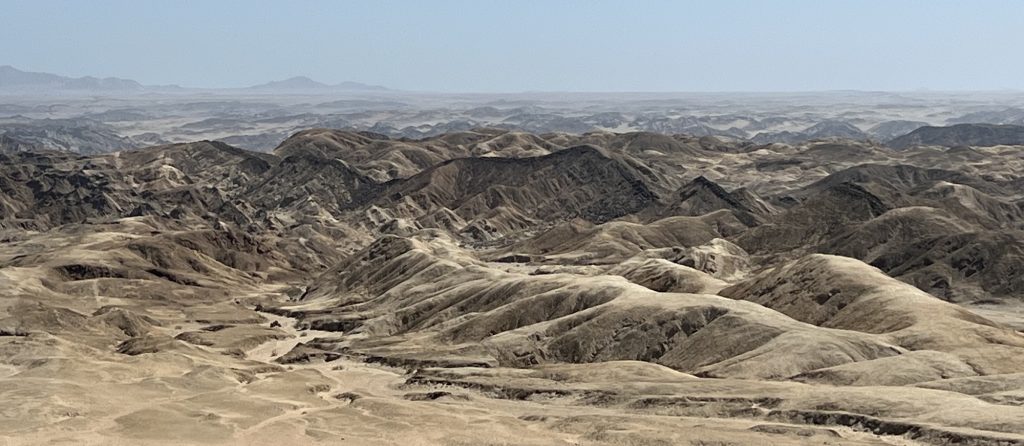
Overlooking the Moon Valley
I was in Gaonikontes twice, once on a day tour from Swakopmund and when I saw the place I decided to come back and spend an additional two days in the oasis – especially after the owner, René Baard, had invited me to join her on a tour with a German photographer. Honestly, this was one of the most extraordinary tours I ever made – mainly because some things were quite unexpected, at least for me. I’ve summarized some of the highlights below.
Places to stay – my choice: Gaonikontes Oasis, Campsite and Lodges. There are a few other campsites which I didn’t visit because I do not camp 🙂
I fell in love with the
when I first saw them just off the road on the way to Windhoek. This unusual plants are very unique, they grow very slowly, get very old (1000-2000 years), can handle extreme heat (up to 65 degree) and are endemic to the Namib Desert in Namibia and Angola. The only have two leaves, each of them can grow longer than six meters; they often break when they get too heavy.
To see at least 15 of them in the middle of the moon landscape on a long stretch left and right of the road was pretty stunning. They added even more humbleness to an already peaceful and ancient place. They were a wonderful part of the scenery …
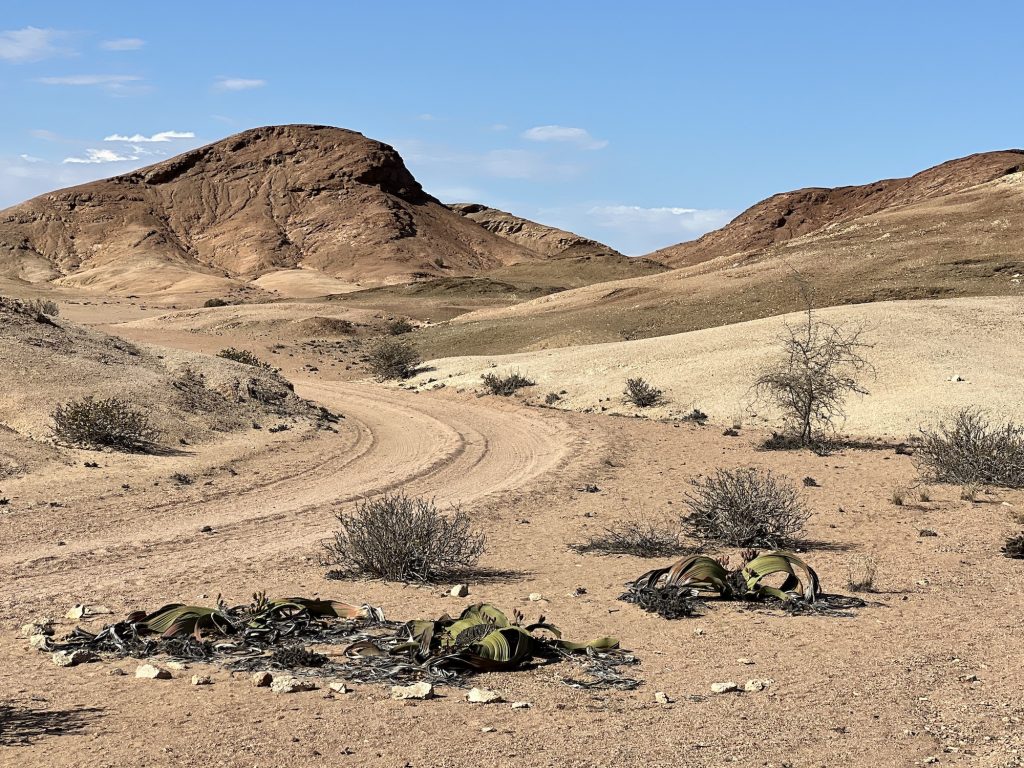
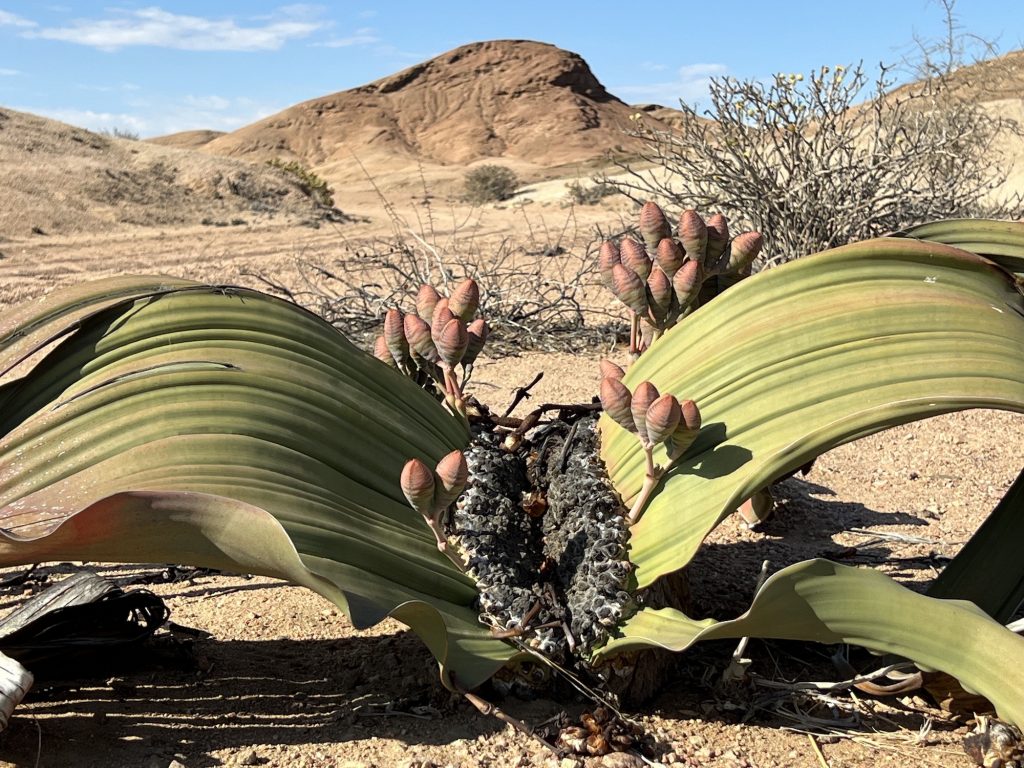
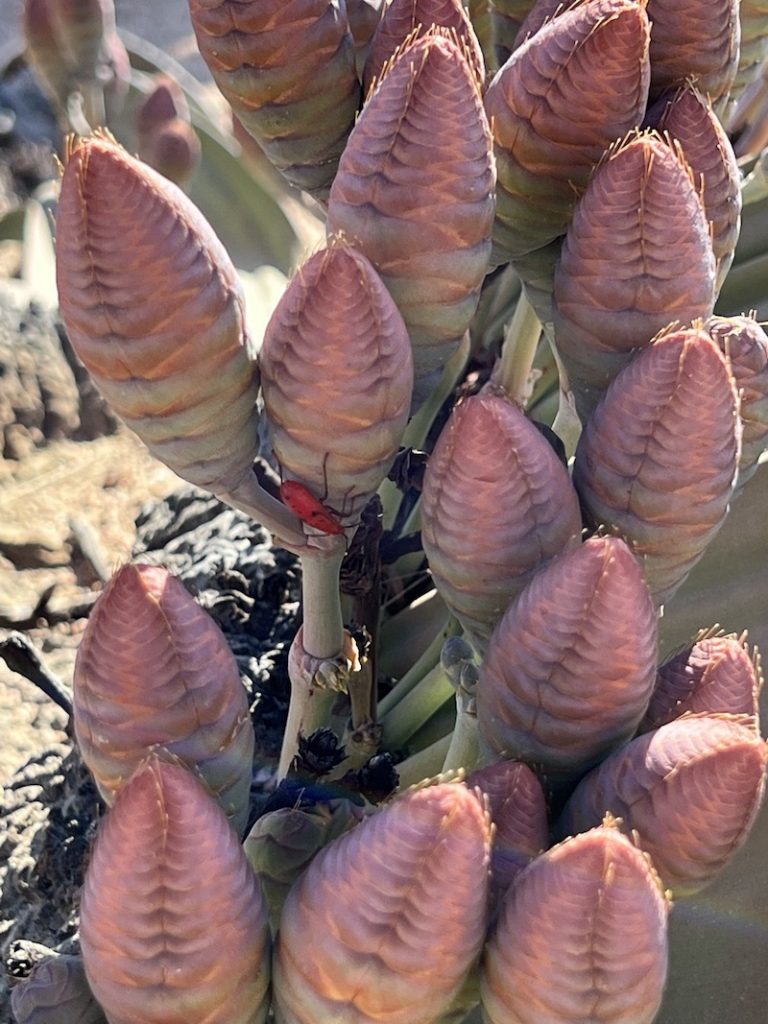
Welwitschia at the roadside, Welwitschia blooming
To my surprise the Moon Valley is a spectacular
Event Location.
On our way René showed us two places which are easily accessible and have space for a couple of hundred people. These are places where the Valley widens and where you have spectacular rock formations. The rocks “protect” against the sometimes nasty winds and provide shelter. These places are used for weddings, product presentations, music events, car and bike races and needless to say for shooting movies. Scenes for Mad Max were shot here. René and her partners provide full service around such events: they set up tents, toilets, catering, permissions, logistics, music, laser, sky diving into the venue …. whatever you need and transform these places into magic. It doesn’t take much of your imagination to envision these places as natural stages. It is such raw, untouched and ancient beauty.
This spot opens as a triangle and you have a natural stage just in front of these rocks. The accoustic is pretty amazing.
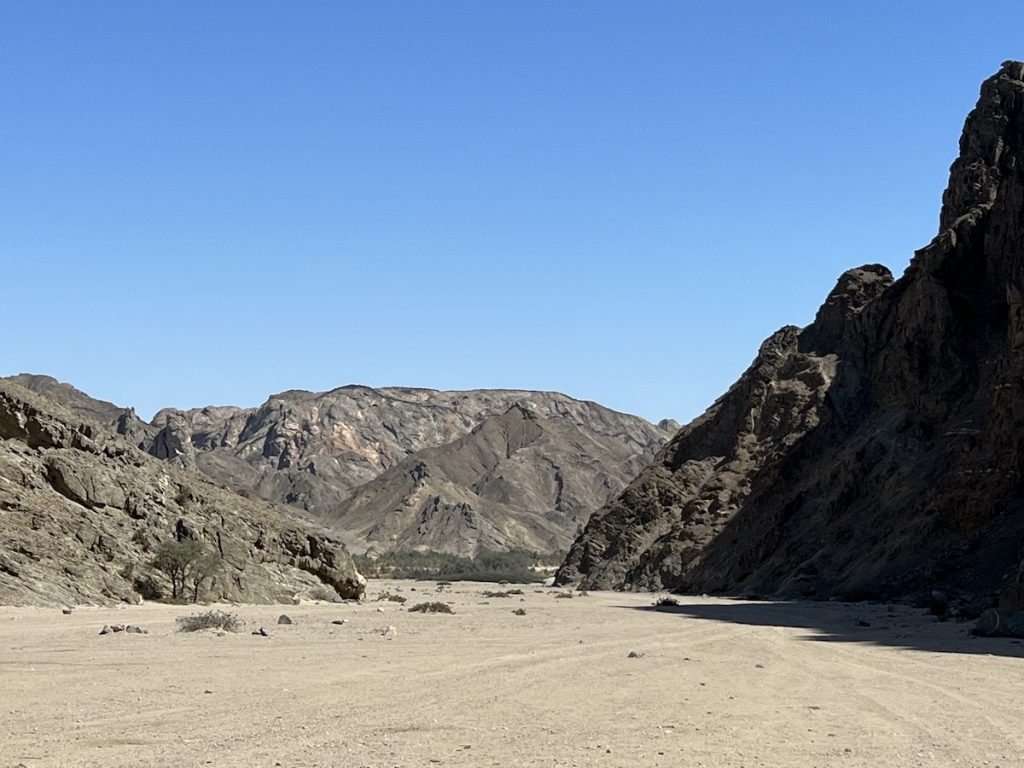
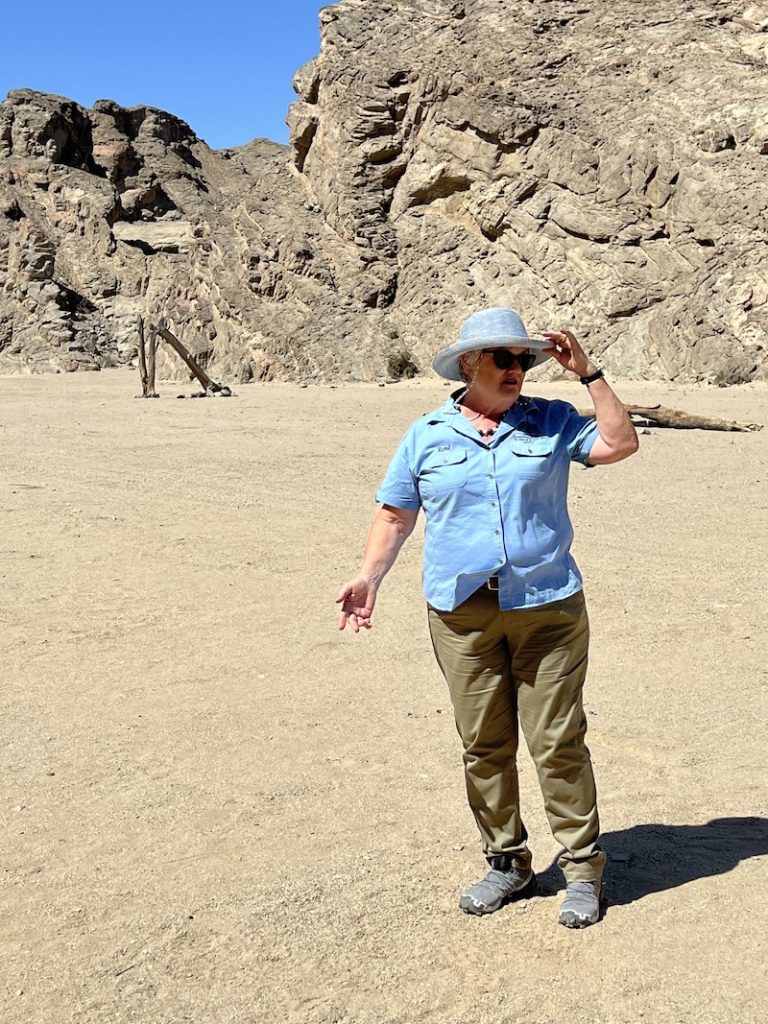
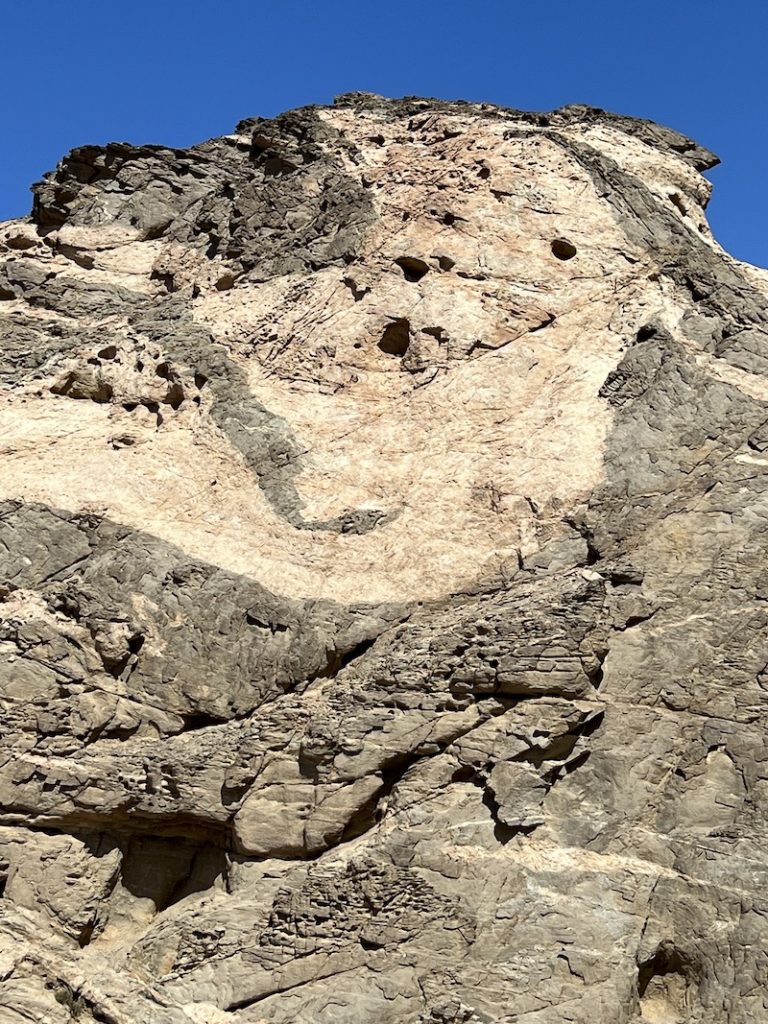
This location is wide open, it is probably the size of two soccer fields and fully protected by huge rocks. It is flat all around and ideal, as René told us, for product presentations.
Caves
Besides the spectacular landscape you will find quite a number of caves in this area. Some of them are big enough to sleep in – so you can camp in the wild. I’ve seen three but this one here is very much outstanding because of its design, size, light and shape. A huge thick flat stone creates the roof so to speak and you can walk through and exit on the other side. You get light from above and from the sides, this makes it comfy.
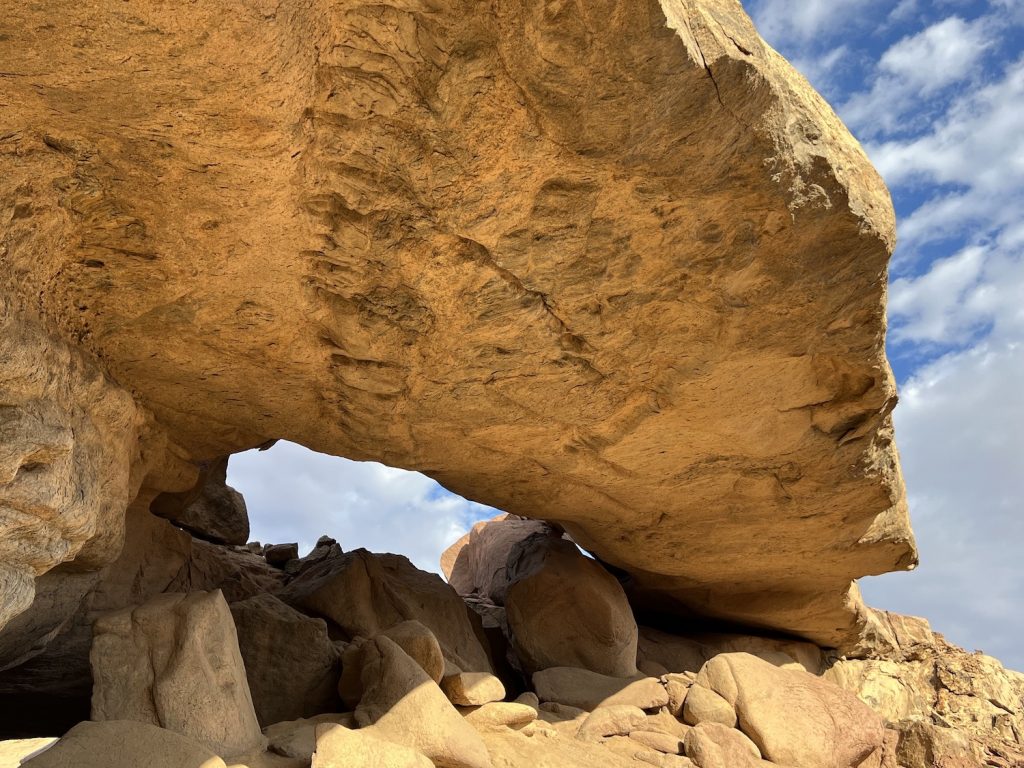
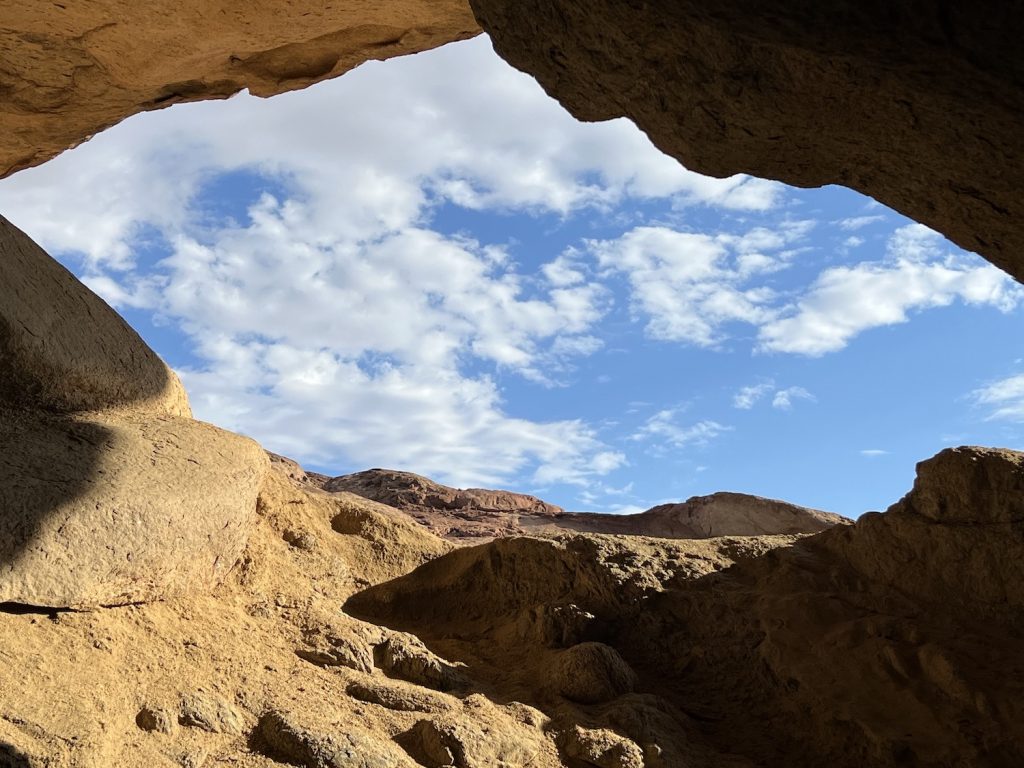
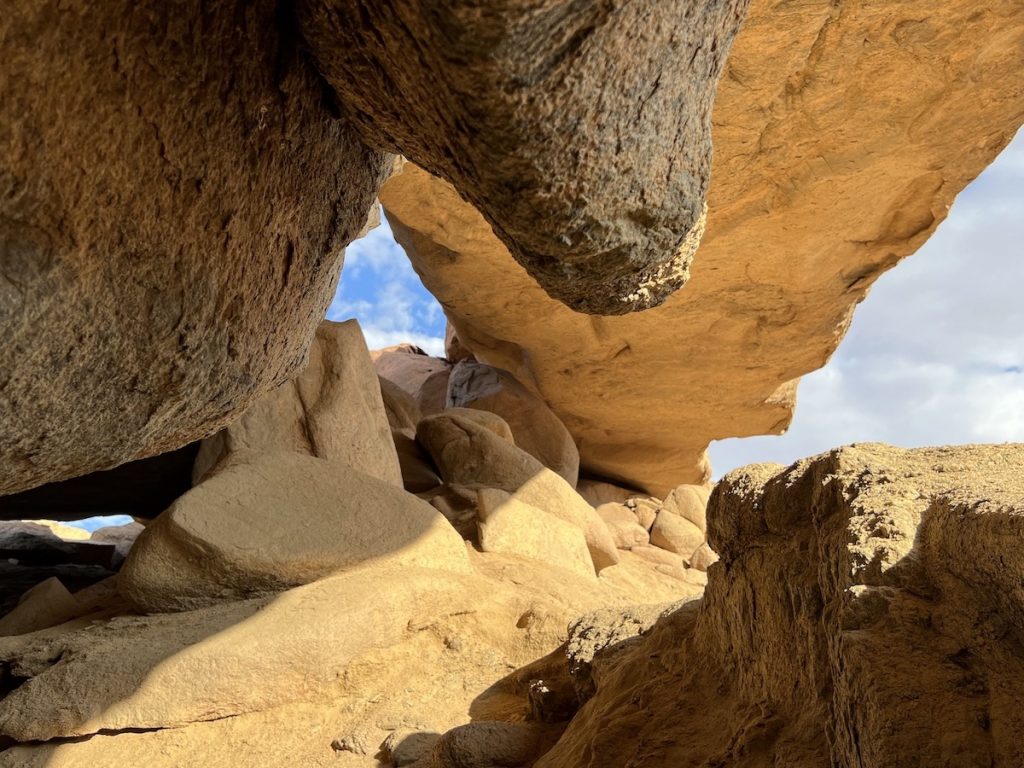

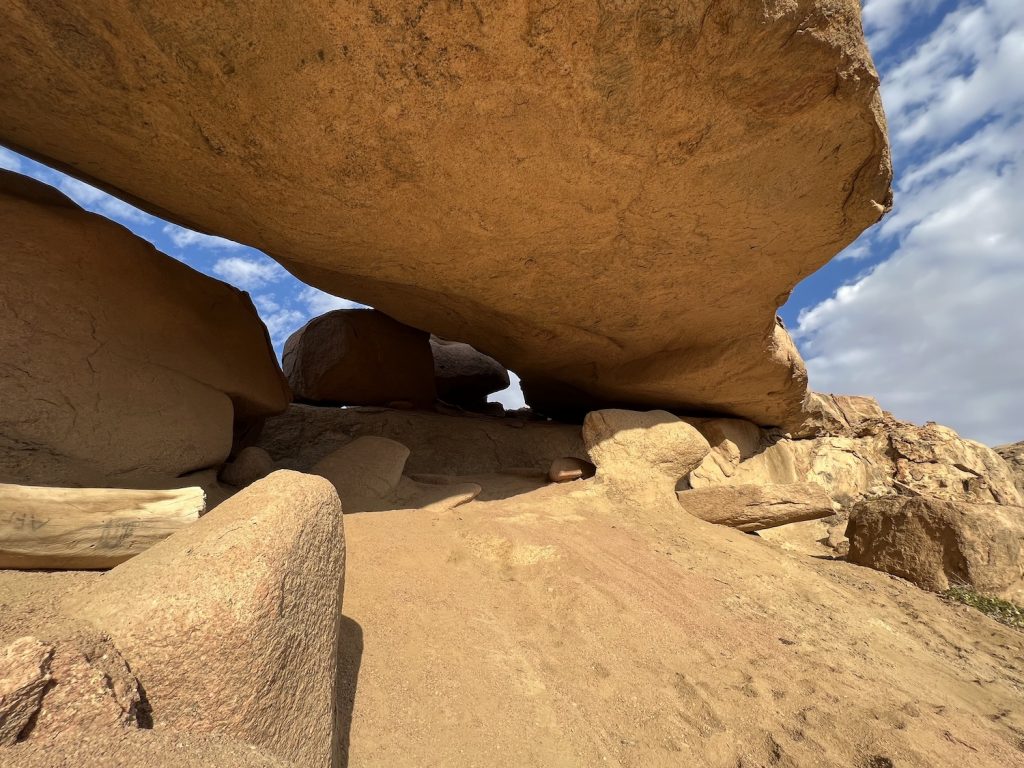
And then there is quite some
Farming
in the river bed. There are smaller ones where the people experiment what might grow under these tough circumstances. I visited one big farm with René Baard where they grow successfully olives, pomegranate and soon all kind of vegetables. The owners, Collin and Sharmine, will soon move their entire farming business to the river bed and practice aquaponics. Aquaponics is a cooperation between plants and fish and the term originates from the two words aquaculture (the growing of fish in a closed environment) and hydroponics (the growing of plants usually in a soil-less environment). Aquaponics needs 90% less water than a “normal” greenhouse – so it is very ecological and suits the area well.
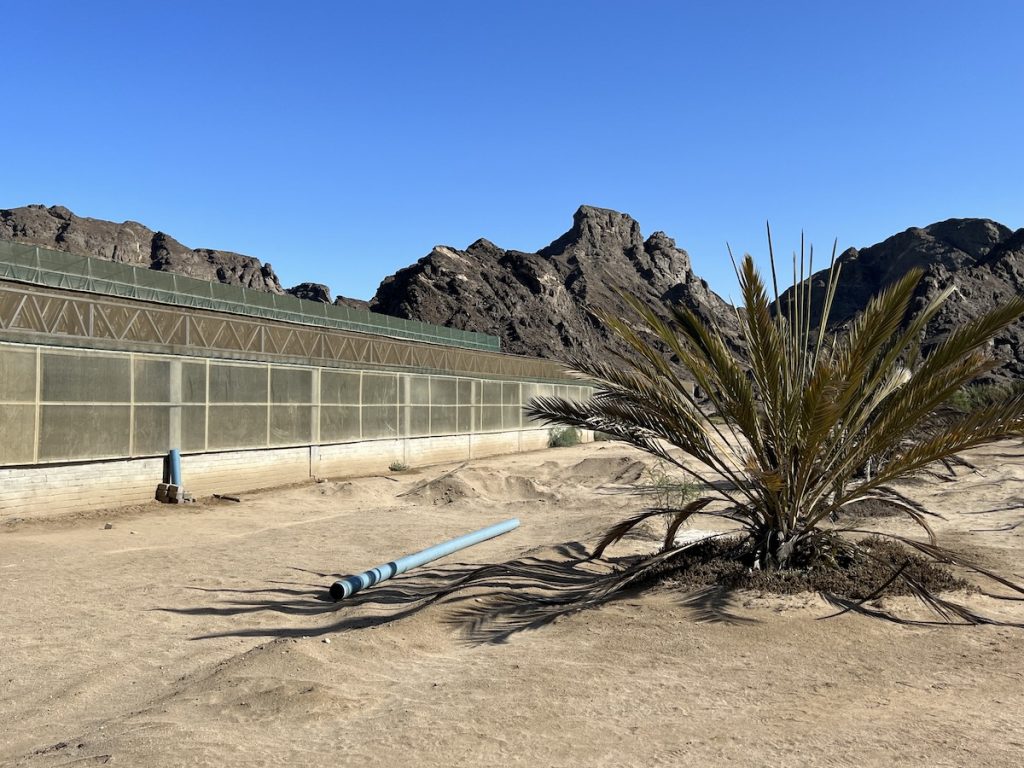
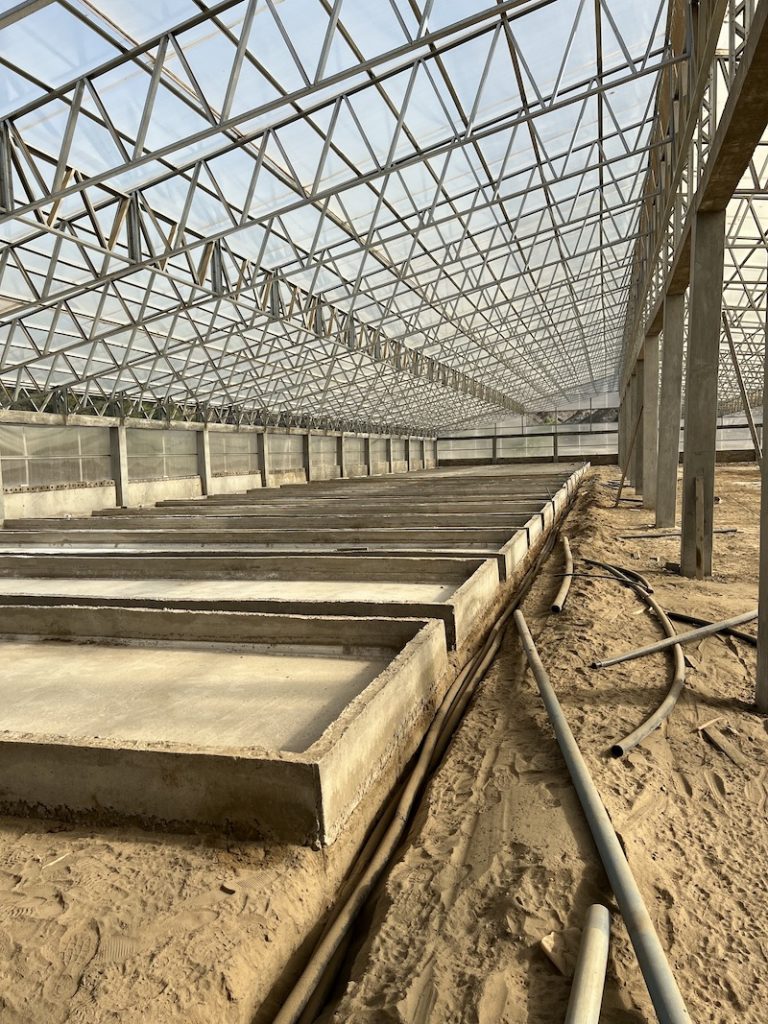
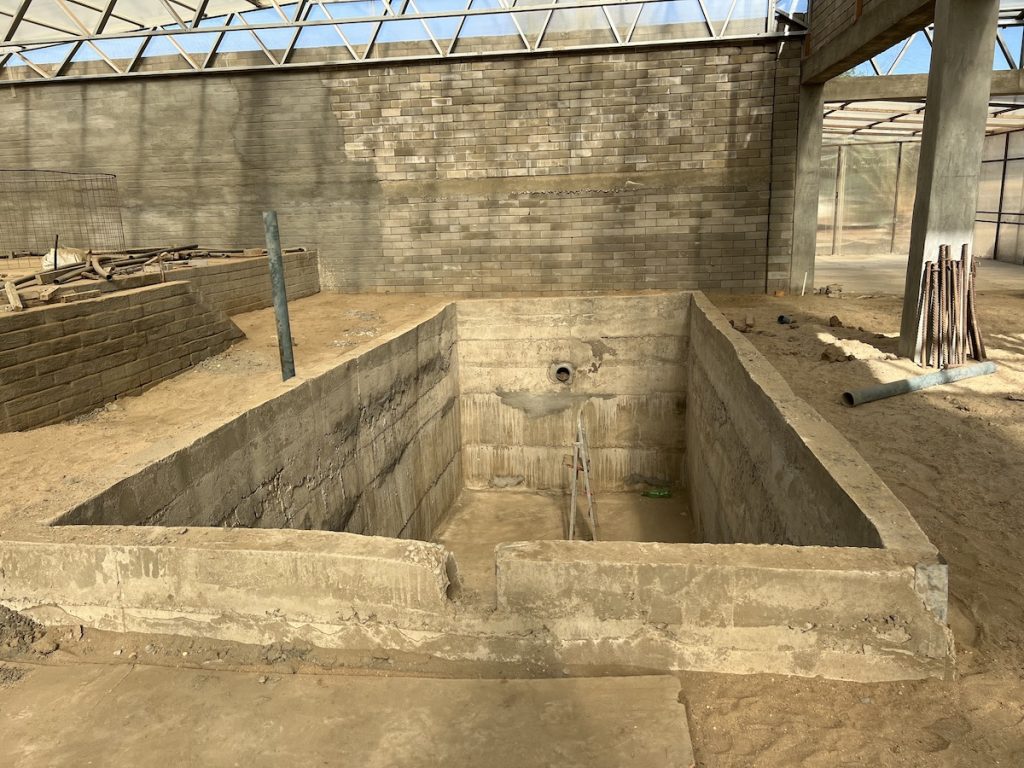
Green house / aquaponic ‘”beds” and where the fish will swim
This farm is right the opposite side of Goanikontes, it is less than a 10 minute drive. The owners partner with René Baard at Gaonikontes, they offer tents, toilettes and all you need for an event in this Moon-Landscpae.
If you want to connect with Goanikontes, leave a message in the comments. I will follow up!
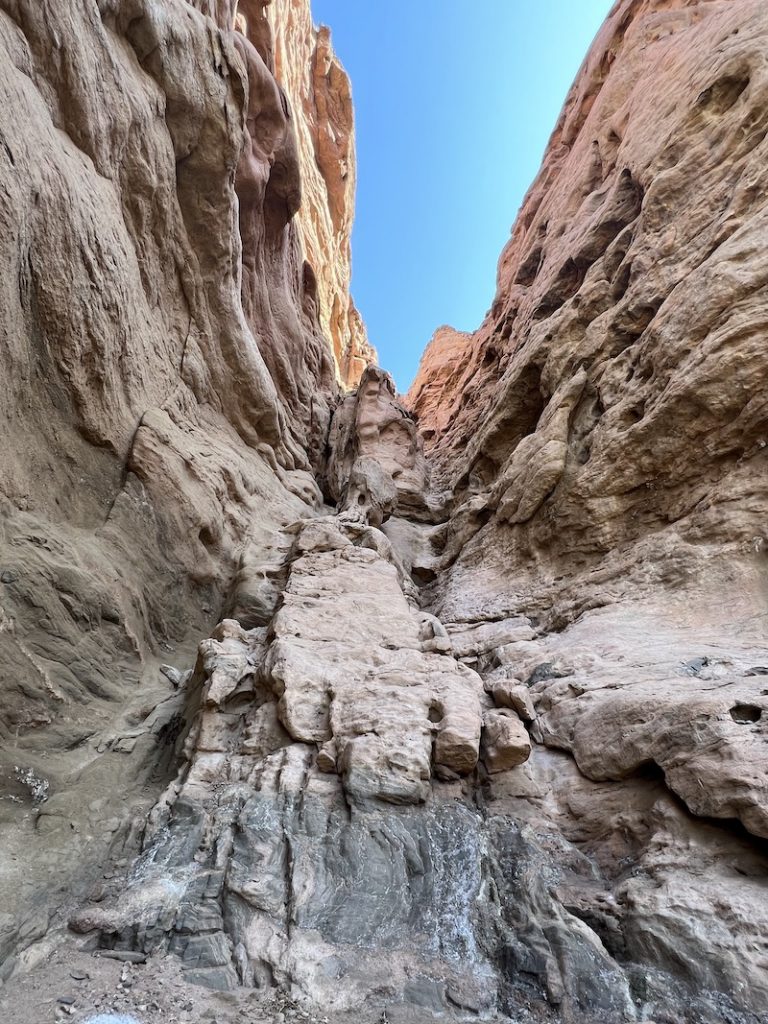
One thought to “The Hidden Gem of The Swakop Riverbed”
Schöner Bericht und schön vor allem auch, dass Du jetzt doch noch nach Goanikontes gekommen bist, nachdem wir bei unserem Ausflug übers Ziel hinausgeschossen sind. 😀
Das mit der Aquaponikfarm muss ich mir unbedingt mal ansehen, weil ich ja ähnliche Pläne habe, wenn auch in kleinerem und naturnäherem Rahmen. Ich finde super, was Du machst. Näher kann man einem Land nicht kommen, als sich mit kleinem Gepäck unter die Leute zu mischen und den public transport in all seinen Varianten zu nutzen. Gute Weiterreise und halte uns auf dem Laufenden. 🙂
Volker